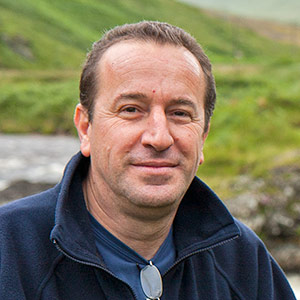The first passenger train ran between Darlington and Stockton in England in 1825. In 1829, the Rocket locomotive (which can be seen today in the Science Museum, London), designed by George Stephenson and his son Robert, the first in a series of machines that became increasingly powerful, was used for the first time in the line from Manchester to Liverpool. Railways quickly expanded to the rest of Europe and the world.
The Industrial Revolution arrived late in Portugal. The first train line was inaugurated only in 1856. The Douro line, which follows essentially the route of the Douro River, with a total length of 212 km, began to be built in 1873 and ended in 1887 - the Portuguese city of Oporto was connected to the Spanish city of Salamanca! It was an extraordinary work of engineering, with the opening of 23 tunnels and the construction of 35 metal bridges (two designed by Gustave Eiffel) and viaducts, and a gigantic human effort by thousands of workers, some of whom lost their lives in accidents during the works.
For a century, this line was decisive for the Port Wine trade, given that its route follows the Douro River, the centre of the demarcated Port Wine region. From a scenic point of view, it is the most important train line in the country continuing to be sought after by many tourists. It is worth visiting in different seasons and times of the day to enjoy the scenic views that appear in front of us.
Although locomotives and carriages have been modernized, the line route, almost always along the riverside, does not allow it to reach high speeds. A few days ago, near the Aregos (Tormes) station, I took this image using a shutter speed of 1/3 second. The train was not travelling at high speed. Still, as I was relatively close to the line, the image became fluid and seemed to me to represent well the innovative nature of this railway line when it was built – the speed of the train, some tens of kilometres per hour, was astonishing for its time!
Benefits of VIP membership:
• Download all new issues of Landscape Photography Magazine
• Download all back issues of Landscape Photography Magazine
• Download all new issues of Wild Planet Photo Magazine
• Download all back issues of Wild Planet Photo Magazine
• Download premium eBooks worth £19.45.
• Create your Personal Portfolio Page – click here to see sample
• Your pictures stay attached to your Personal Portfolio Page forever
• Your published pictures are shared with over 300,000 members and followers
• Your shared pictures are tagged on Instagram
• Submission Priority – your submission goes to the front of the queue
• Fast Support – we aim to reply within 12 hours
 Create your Personal Portfolio Page and let us share your published pictures with over 300,000 members and followers.
Create your Personal Portfolio Page and let us share your published pictures with over 300,000 members and followers.
Dimitri Vasileiou • Editor


